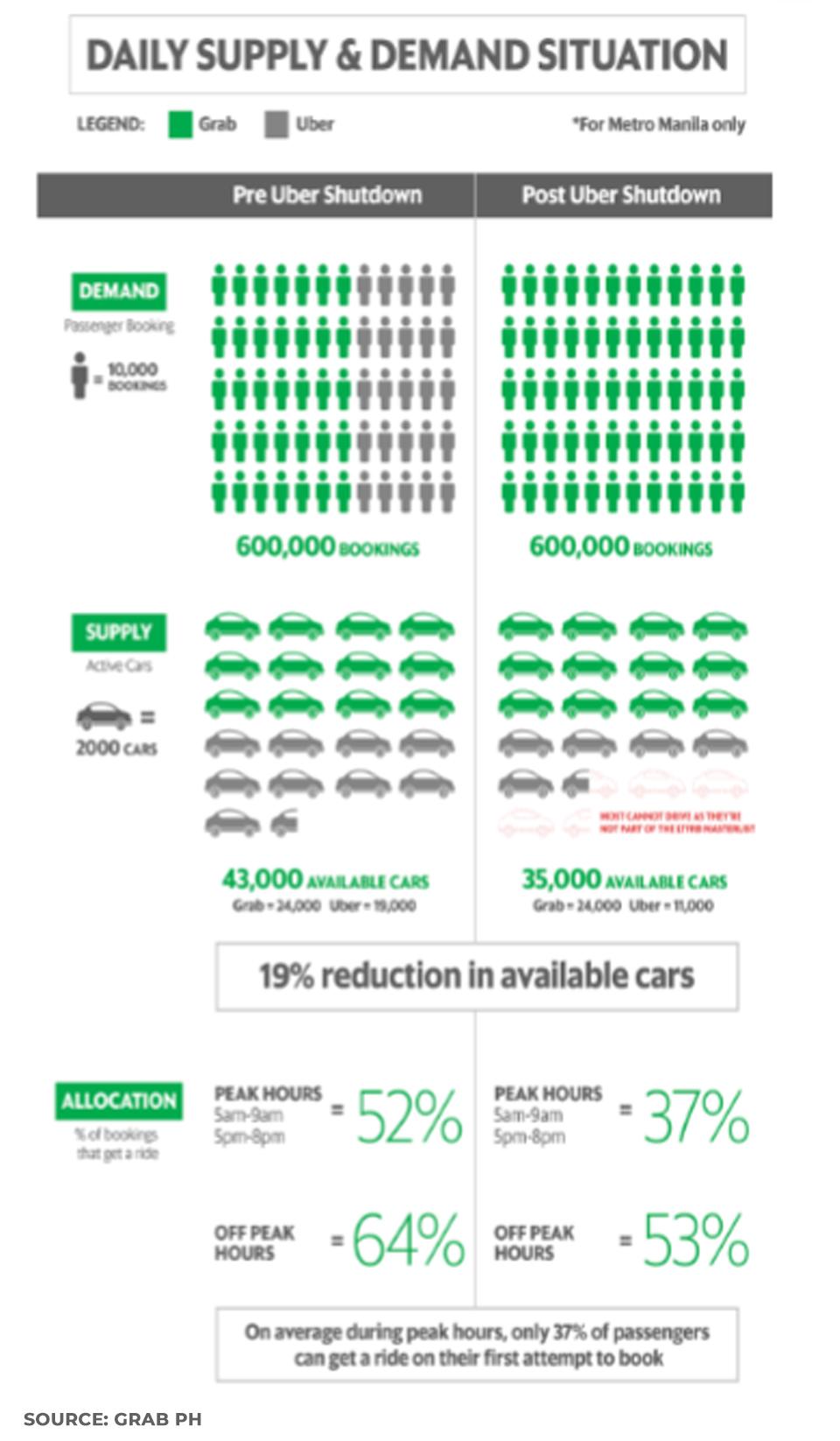Active TNVS drivers can't keep up with 600,000 daily booking requests —Grab
The number of active Transport Network Vehicle Service (TNVS) drivers are not enough to cover booking demands from riders across various transport network companies (TNCs), Grab Philippines country manager Brian Cu said on Wednesday.
“Meron pong 600,000 riders, pero hindi po sapat ang sasakyan,” Cu said during a forum at Cafe Adriatico Manila.
Grab receives 600,000 booking requests each day, but the TNC has a pool of only 35,000 vehicles that may also be tapped by other ride-hailing companies such as GoLag, HirNa, and Hype.
Prior to acquiring the Southeast Asian business of Uber Technologies Inc., Grab had 24,000 vehicles and was serving 60 to 65 percent of the bookings while Uber had 19,000 vehicles with a success rate of 50 percent—both below the ideal success rate of 75 percent.
“Hindi naman po ... natin (expected) na 100 percent. Kasi kung 100 percent, super efficient ‘yan, ang kawawa naman ay ‘yung driver ... Sa 75 percent naman, may konting pasahero na hindi makakakuha, meron ding drivers na fully-utilized,” Cu noted.
“Right now, we are way below that acceptable number,” he said. “We’re under the impression na marami pong sasakyan, we’re under the impression na mapili ang mga driver, which is not true.”

Displaced drivers
Only 11,000 Uber drivers moved to Grab, with 6,000 of previously active drivers dropping out due as they were not included in the Land Transportation Franchising and Regulatory Board’s (LTFRB) audited masterlist.
“‘Yun lang po ang pwedeng mag-apply sa Grab. Dahil po dito sa masterlist na ‘to ay hindi tugma sa active o bumiyabiyahe sa Uber, meron po tayong 6,000 displaced drivers,” Cu said.
“Hindi po namin sila ma on-board dahil wala sila sa masterlist na sinubmit ng Uber ng time na ‘yun na ginawa ang masterlist.”
As Grab said in a separate statement that “only 53 percent of passengers are able to get a ride on first attempt at booking, but the number goes down to 37 percent on average during peak hours.”
Drivers were also “disincentivized” as there was a sudden drop in their income due to the suspension of the P2 per minute travel charge, Grab claimed, saying it was a loss that Grab is paying out of its own pocket to motivate drivers to turn the ride-hailing app on.
“Driver numbers continue to drop as uncertainty in maintaining sustainable livelihood increases. With the recent suspension of the P2 per minute fair, a lot of drivers and operators fear they won’t be able to provide for their families and car maintenance expenses,” Cu said.
Grab has blamed the suspension of the P2 per minute charge for the increase in trip cancellations experienced by prospective passengers.
Cu appealed to the LTFRB to allow displaced drivers to continue working, either with Grab or the competition as a way of meeting the demand from riders.
“We’re requesting to work with the LTFRB, ‘yung regulators, para ma on-board natin yung 6,000 drivers at ma-provide ‘yung serbisyo na dapat mapo-provide natin sa riding public,” he said.
In addition to providing incentives to drivers who are not employees of Grab but are working for the TNVS operator they are a part of, Grab claimed it is also providing other benefits such as an additional P200,000 insurance on top of the government mandated insurance of P200,000.
“That’s from our own pocket. Even before pa po (yung suspension ng P2 per minute travel time). This is to encourage drivers to drive,” said Cu. —VDS, GMA News

Need a wellness break? Sign up for The Boost!
Stay up-to-date with the latest health and wellness reads.
Please enter a valid email address
Your email is safe with us





